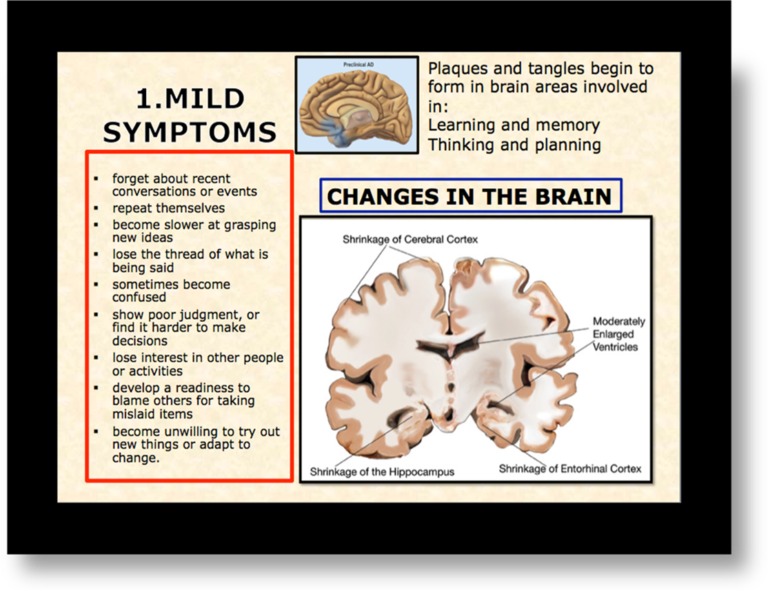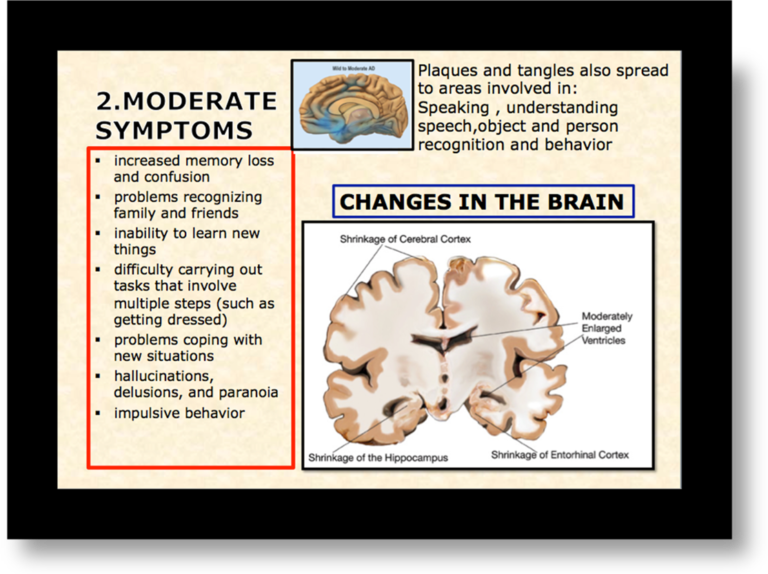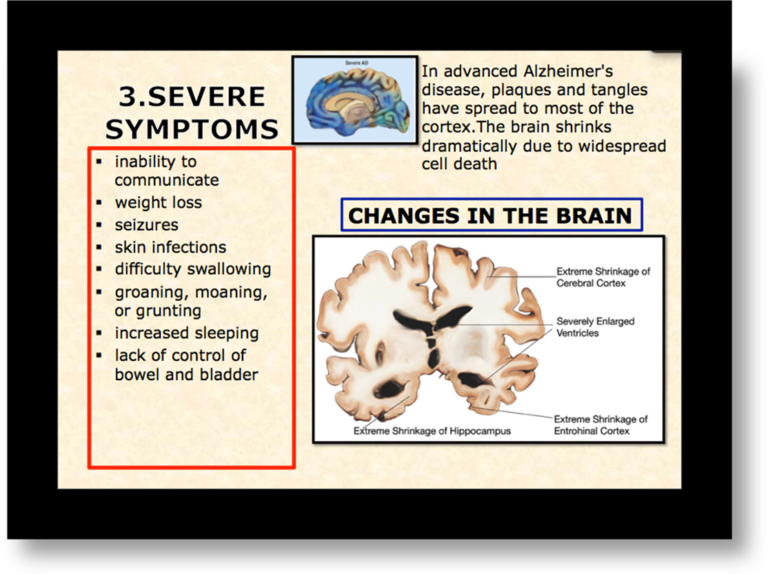It is a difficult task to distinguish the early stages of dementia from normal aging due the gradual appearance of symptoms. Added to this is that early in the disease process the patient often has limited awareness of his or her deficits. Alzheimer disease spreads through the brain in a characterized sequence. Therefore the symptoms associated with Alzheimer’s disease appear in a certain order.
Upon being diagnosed with Alzheimer’s disease your doctor may provide you information about the various stages of the disorder. These stages can provide general guidelines for understanding the progression of Alzheimer’s symptoms and planning appropriate care. However, it is important to remember that each individual with Alzheimer’s progresses differently. Cognitive, physical, and functional phases often overlap, the time in each stage varies widely from patient to patient, and not everyone experiences all Alzheimer’s symptoms.
Alzheimer’s disease usually progresses through three distinct phases referred to as mild, moderate, and severe (or, alternatively, early, middle, and late) Progression though the various stages can last usually 8-10 years but can stretch out as far as 20 years.
1. MILD (lasts 2-4 yrs) The first part of the brain affected in Alzheimer’s is the hippocampus therefore it is no surprise that memory is the first to be affected. People in this early or mild stage of Alzheimer’s preserve their oldest memories fairly well, but start to frequently forget things that they learned more recently. As they begin to ask questions more and more often, and sometimes repeatedly, about things such as an upcoming appointment or an errand that they have to run, the people around them soon start to notice. People in this stage of Alzheimer’s also use various strategies to aid their memories, such as posting notes to themselves around the house.

2. MODERATE (lasts 2-10 yrs) In this stage, damage occurs in areas of the brain that control language, reasoning, sensory processing, and conscious thought. Memory loss and confusion grow worse, and people begin to have problems recognizing family and friends. They may be unable to learn new things, carry out tasks that involve multiple steps (such as getting dressed), or cope with new situations. They may have hallucinations, delusions, and paranoia, and may behave impulsively.

3. SEVERE (lasts 1-3+ yrs) By the final stage, plaques and tangles have spread throughout the brain, and brain tissue has shrunk significantly. People with severe Alzheimer’s cannot communicate and are completely dependent on others for their care. Near the end, the person may be in bed most or all of the time as the body shuts down.

*Images courtesy of the National Institute on Aging/National Institutes of Health*
